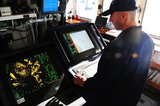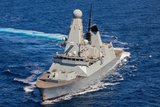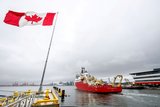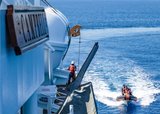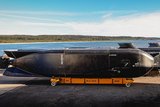Japan accelerates naval shipbuilding with new OPVs, destroyers and amphibious craft
JMU and BMT exhibited this model of Japan’s version of the Caimen landing craft. It forms the basis for the Maneuver Support Vessel. (Photo: author)
Japan Marine United (JMU), a major naval shipyard that produces Japan’s naval surface vessels, has four offshore patrol vessels (OPV) that will be used for coastal patrol by Japan’s navy currently under construction.
Speaking at DSEI Japan 2025, held from 21-23 May, Tetsuya Shibuta, manager of planning team – planning group for Naval Ship Engineering Department, Yokohama Shipyard, told Shephard that JMU has almost finished the critical design phase for the vessels which it named 05OPVs.
While design has not yet been finalised, the shipbuilder started cutting steel and building blocks in February. Furthermore, next month, block loading will occur
Already have an account? Log in
Want to keep reading this article?
More from Naval Warfare
-
![How the use of artificial intelligence will affect the US Coast Guard’s acquisitions]()
How the use of artificial intelligence will affect the US Coast Guard’s acquisitions
The USCG is pursuing AI tools to improve the way the service conducts its procurement and fielding processes.
-
![US Coast Guard pursues solutions to increase maritime domain dominance]()
US Coast Guard pursues solutions to increase maritime domain dominance
The USCG is seeking technologies, services and applications to better connect its assets and speed up the decision-making process.
-
![How the Anduril-HHI autonomous ship plan fits in with the US Navy’s MASC programme]()
How the Anduril-HHI autonomous ship plan fits in with the US Navy’s MASC programme
The new modular vessel is expected to be developed for both commercial and defence use, with a heavy focus on production speed and mission flexibility.







